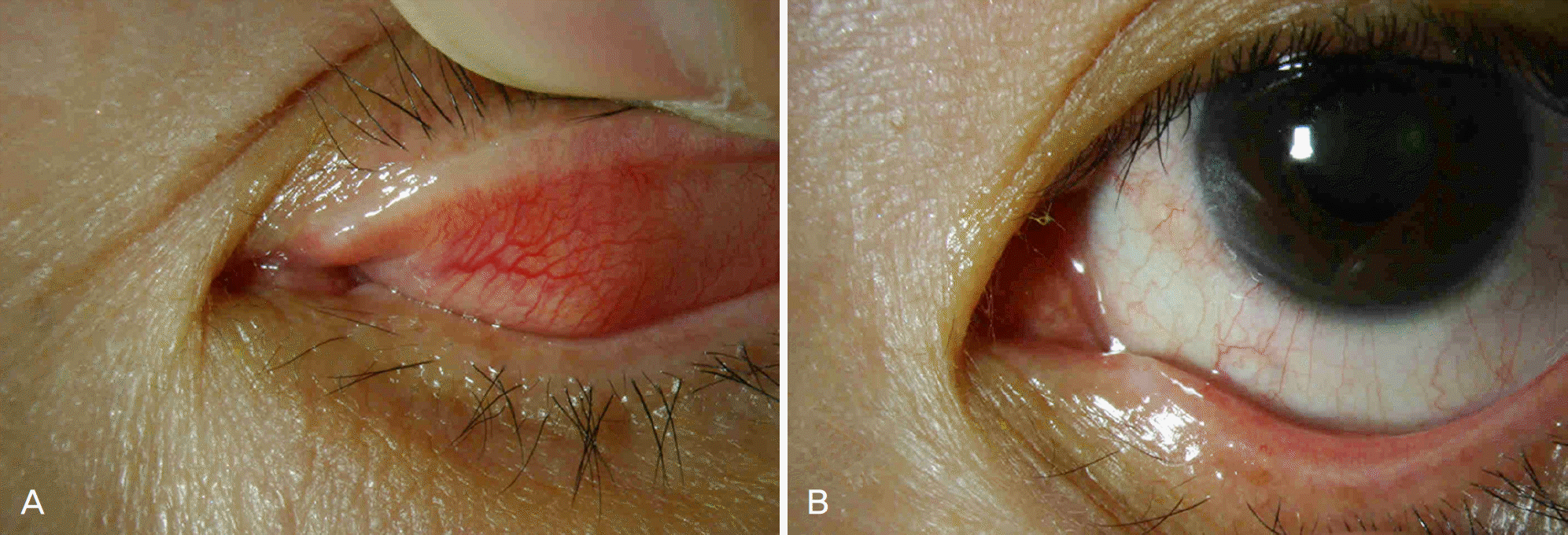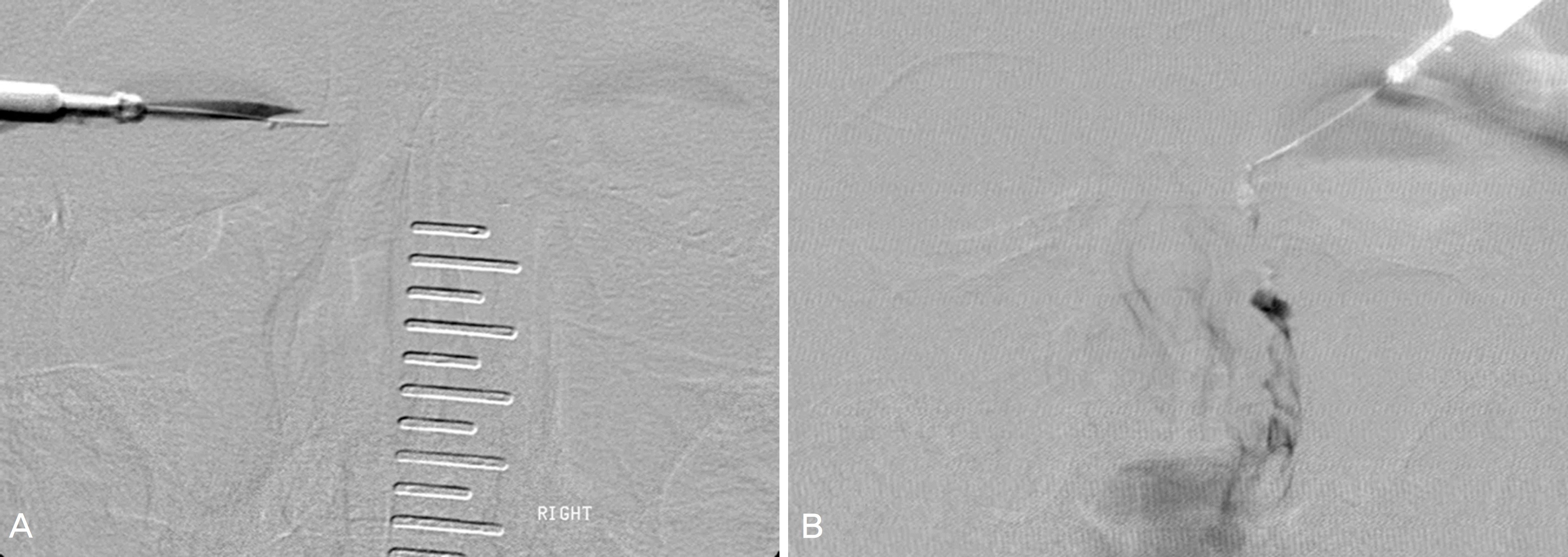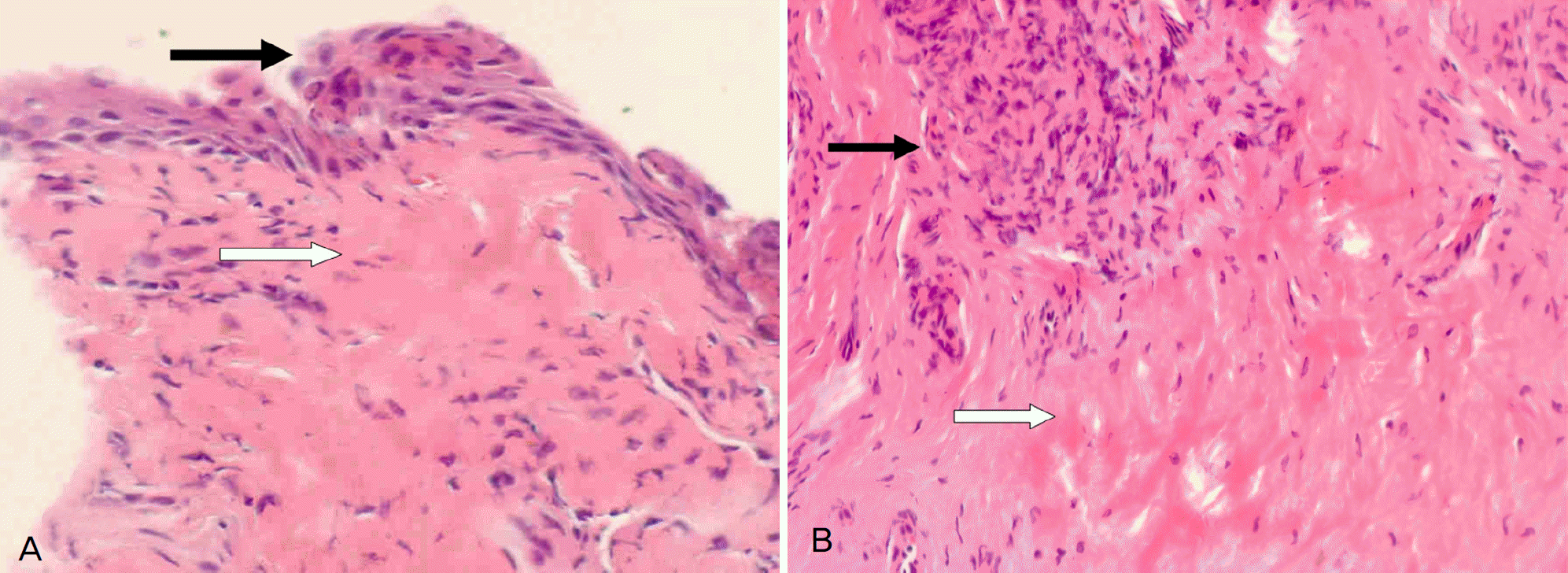Abstract
Purpose
To report two cases of lacrimal drainage obstruction associated with the anticancer drug S-1 (tegafur, gimeracil, oteracil; TS-1®, Taiho Pharmaceutical, Japan).
Case summary
(Case 1) A 34-year-old male who had previously undergone a total gastrectomy for treatment of gastric cancer visited with epiphora in both eyes that had developed 6 months after S-1 treatment. On examination, a right canalicular obstruction and left punctal and nasolacrimal partial obstruction were noted. Endoscopic dacrycystorhinostomy with lacrimal trephinization was done in the right eye and punc-toplasty with punctal membrane removal and silicone tube intubation were performed in the left eye and the epiphora were successfully treated. (Case 2) A 60-year-old male who was treated with S-1 for gastric cancer presented with tearing in both eyes that had developed 2 months after S-1 treatment. Ophthalmic examinations revealed a right nasolacrimal partial obstruction in the right eye and lacrimal sac obstruction in the left. Silicone intubations were performed on both sides and the epiphora were successfully treated.
References
1. Shirasaka T. Development history and concept of an oral anticancer agent S-1 (TS-1): its clinical usefulness and future vistas. Jpn J Clin Oncol. 2009; 39:2–15.
3. Eiseman AS, Flanagan JC, Brooks AB, et al. Ocular surface, ocular adnexal, and lacrimal complications associated with the use of systemic 5-fluorouracil. Ophthal Plast Reconstr Surg. 2003; 19:216–24.

4. Caravella LP Jr, Burns JA, Zangmeister M. Punctal-canalicular stenosis related to systemic fluorouracil therapy. Arch Ophthalmol. 1981; 99:284–6.

5. Brink HM, Beex LV. Punctal and canalicular stenosis associated with systemic fluorouracil therapy. Report of five cases and review of the literature. Doc Ophthalmol. 1995; 90:1–6.
6. Lee V, Bentley CR, Olver JM. Sclerosing canaliculitis after 5-fluorour-acil breast cancer chemotherapy. Eye. 1998; 12:343–9.

7. Fezza JP, Wesley RE, Klippenstein KA. The treatment of punctal and canalicular stenosis in patients on systemic 5-FU. Ophthalmic Surg Lasers. 1999; 30:105–8.

8. Jeung HC, Rha SY. Recent advance in tailored treatment of gastric cancer. Korean J Med. 2009; 77:1–8.
9. Kennedy BJ. 5-fluorouracil toxicity: old or new? Cancer. 1999; 86:1099–100.
10. Imperia PS, Lazarus HM, Lass JH. Ocular complications of systemic cancer chemotherapy. Surv Ophthalmol. 1989; 34:209–30.

11. Straus DJ, Mausolf FA, Ellerby RA, et al. Cicitricial ectropion secondary to 5-Fluorouracil therapy. Med Pediatr Oncol. 1977; 3:15–9.
Figure 1.
Preoperative photographs of case 1 patient show left (A) upper and (B) lower punctal stenosis.

Figure 2.
Preoperative macro digital subtraction dacryocystographic findings of case 1 patient show (A) right canalicular obstruction and (B) left nasolacrimal duct partial obstruction.

Figure 3.
(A) Histopathologic findings of punctal membrane (case 1) show subepithelial fibrosis (white arrow) be-low stratified squamous epithelium (black arrow) (hematoxylin-eosin, ×200) (B) Histopathologic findings of lacrimal sac (case 1) show chronic inflammation consisting of lymphocytes (black arrow) with fibrosis (white arrow) (hematoxylin-eosin, ×200).





 PDF
PDF ePub
ePub Citation
Citation Print
Print



 XML Download
XML Download